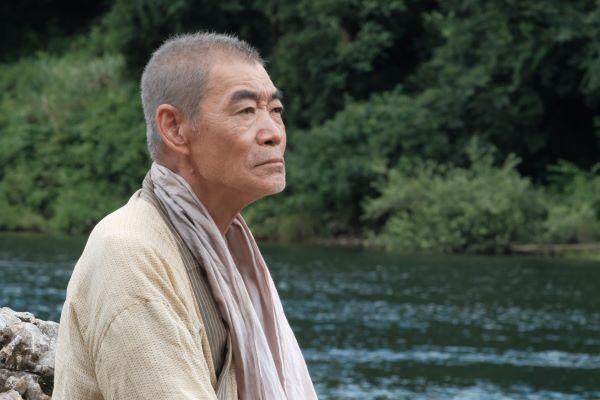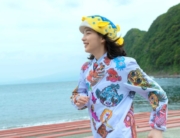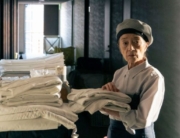Toichi (Akira Emoto), an elderly ferryman in a remote, unspecified area in Meiji–era Japan (1868–1912), seems like a sort of community fixture, though the time when he was in demand has long since passed. He spends much of his time with Genzo (Nijiro Murakami), a much younger fisherman, who is displeased about the building of a new bridge nearby, which has scared away the fish and, he is convinced, will put Toichi out of business. Toichi is, at first, much more stoic. We are likely to see him sitting on a rock, staring out into the river and the vastness of forest behind it, at work whittling a piece of wood in his hut, or walking through the shallows, briefly disturbing a group of minnows. This simple life offers him some richness, though this is left unstated.
They Say Nothing Stays the Same does not have much of a plot per se. Instead, it is structured as a series of episodes. The events that have the greatest impact are the gradual building of the bridge and the appearance of a young woman (Ririka Kawashima) floating in the water with a head wound. Toichi nurses her back to health, and her presence creates a significant change in his previously solitary life.
This film is shot by Christopher Doyle, the cinematographer most famous for working with Wong Kar-wai and Edward Yang, and it looks incredible. The landscape is captured in a variety of modes with nuance and precision. For instance, the river is filmed in many different kinds of light with equal beauty. Frequently, figures are positioned in expressive, painterly diagonals, that give the frames an incredible sense of depth. This is even more impressive given that the action takes place almost entirely in one general area. There are times the film feels almost like a play in the structure of its action, yet it never ceases to feel cinematic in the quality of its imagery.
There are passages of beauty, especially when Toichi first discovers the woman and begins taking care of her. The film is at its strongest when the themes recede into the background and the characters grapple with one another in situations they are not used to. Yet much of it is not so assured, and by the end, the film has become thoroughly muddled. Rarely do we feel that the episodes are building toward something, even though the construction of the bridge is presumably the shadow that hangs over all the action. This film also contains much stillness, but it is never the kind of charged silence of a master like Victor Erice. There are also a series of unconvincing and heavy-handed incursions of the supernatural, which lack the smoothness of transition between the real and unreal that is the hallmark of films like Ugetsu and Fanny and Alexander.
Fascinatingly, this film is at its most artificial whenever there is talk about the changing times or anger on Toichi’s part that the bridge will destroy his way of life. This is especially perplexing because, on paper, his anger, and that of others on his behalf, makes perfect sense, yet somehow the filmmaker failed to make this resonant. In spite of the attention to the physical details and atmosphere of Toichi’s world, we do not feel his emotional life with the same force and precision. Consequently, the final events of the film, and many others, fail to move us as they should.

















Leave A Comment